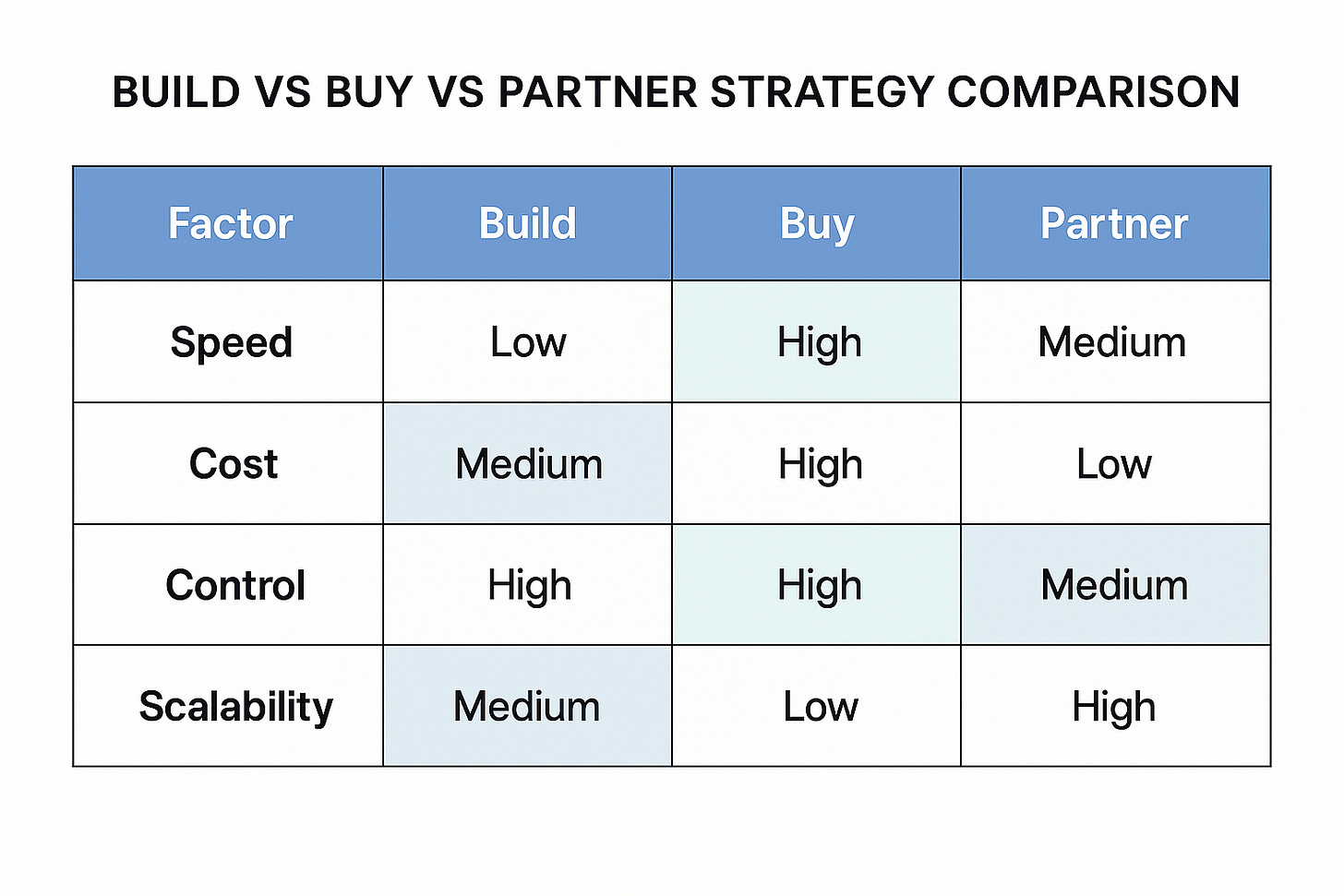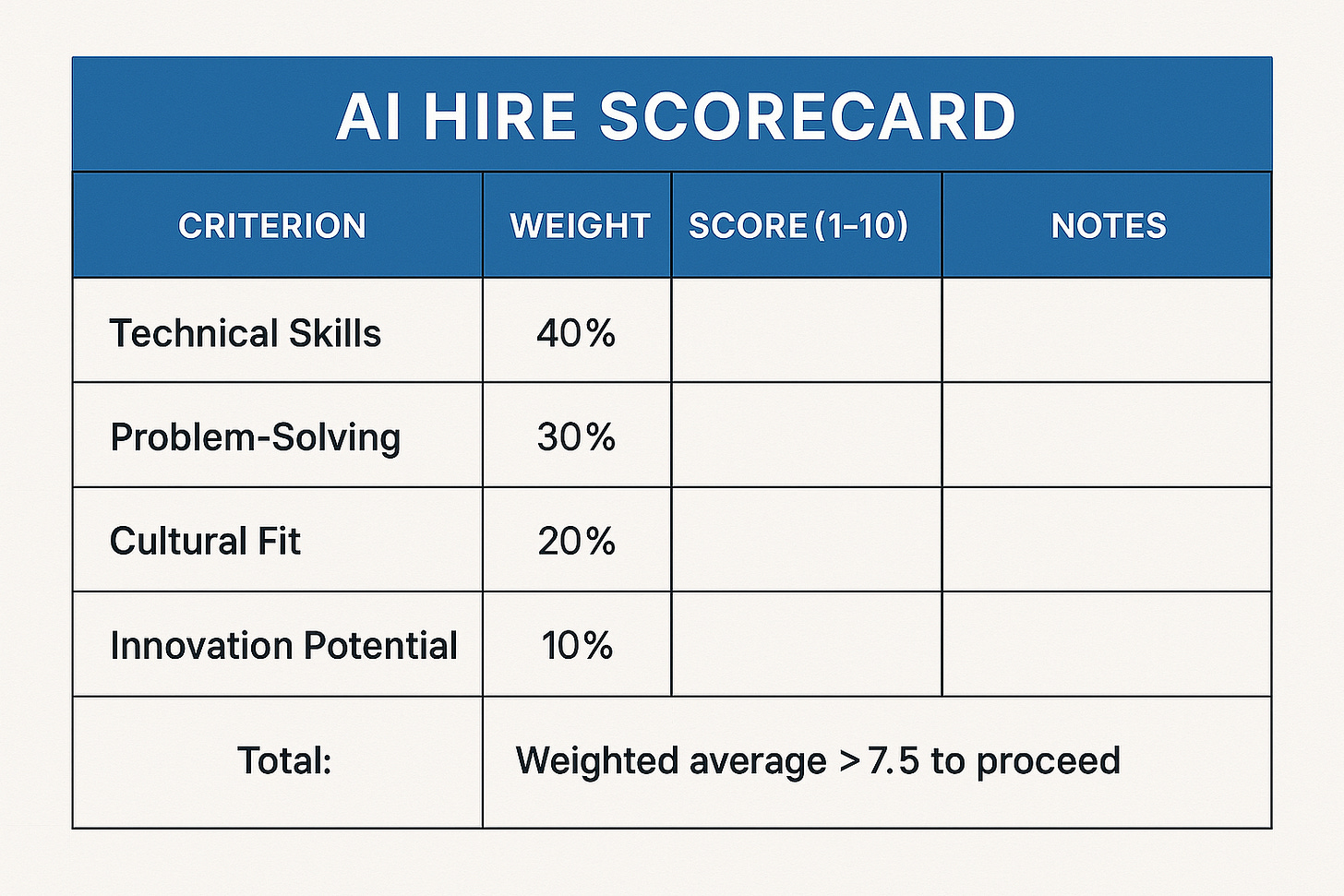The AI Talent Crisis & How Smart Leaders Are Winning the War
The average AI Engineer today is earning $250K+, but the executives that are winning the AI talent battle are rewriting the playbook.
As artificial intelligence accelerates, the race for talent has never been fiercer. As CHROs, talent leaders, and department heads, you are on the front lines of this battle with rising costs, competition, and the demand for delivering results on AI initiatives. Amidst this chaos, a new generation of leaders is winning. These are the leaders who are embracing innovative, holistic approaches that will fundamentally change their organizations.
This article examines the difficult truth of the AI talent market, and presents actionable ideas that will enable you to create a resilient, high-performing AI team.
The Talent Reality: Current Market Data and Projections
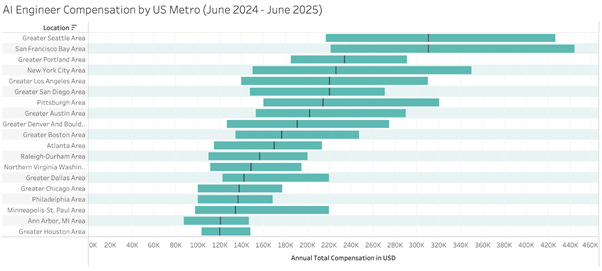
The AI talent crunch is here, and it's reshaping global workforces.
According to recent data from Levels.fyi's Q3 2025 AI Engineer Compensation Trends report, AI engineers at top tech companies are earning total compensation packages approaching $917,000 annually, far outpacing non-AI roles at the same level.
Built In reports an average base salary of $175,262 for AI engineers in the US, with additional cash compensation averaging $35,333, pushing total comp well into the $200,000+ range for many.
Coursera, citing US Bureau of Labor Statistics, pegs the median at $145,080, but specialized roles like machine learning engineers can command up to $440,000 in base pay alone, per FinalRoundAI's 2025 analysis.
This salary escalation is obviously driven by explosive demand.
Magnit's AI Talent Report for 2025 reveals that AI talent demand doubled in Q1 alone, with hotspots in tech hubs like San Francisco, New York, and Seattle.
Veritone's Q1 2025 labour market analysis shows 35,445 AI-related job postings in the US, a 25.2% year-over-year increase.
Projections paint an even starker picture: Validated Insights estimates a shortage of approximately 700,000 AI jobs by the end of 2025, exacerbating delays and costing companies an average of $2.8 million annually in stalled initiatives, as noted in FullScale's report.
Globally, PwC's 2025 Global AI Jobs Barometer highlights that sectors like finance, healthcare, and manufacturing are seeing AI-driven job growth, but the supply of skilled workers isn't keeping pace. Bain & Company warns of a widening gap between AI ambitions and available talent, derailing generative AI projects for many executives. By 2030, this mismatch could reach millions, per Stanford HAI's 2025 AI Index Report, which tracks surging AI patents and systems but lagging workforce development.
In short, the market is a seller's paradise for AI experts, with demand projected to outstrip supply by 20-30% annually through the decade. Smart leaders recognize that this is an organizational imperative.
The Smart Leader's Approach
Winning the AI talent war requires a multifaceted strategy that goes beyond recruitment.
Savvy executives are blending "build, buy, and partner" models to create sustainable talent pipelines. Here's a high-level overview:
Build vs. Buy vs. Partner Strategies: "Build" focuses on internal development; "buy" on acquiring external talent; "partner" on collaborations with universities, startups, or vendors to access skills without full ownership.
Upskilling Existing Teams: Transforming current employees into AI-capable contributors through targeted training.
Creating AI-Attractive Culture: Fostering environments that draw top talent via innovation, ethics, and work-life balance.
Retention Strategies That Work: Implementing personalized incentives, career paths, and engagement tactics to keep stars onboard.
For a deeper dive, let's explore one key strategy: upskilling existing teams. This approach not only mitigates shortages but also boosts morale and reduces turnover.
Deep Dive: Upskilling Existing Teams
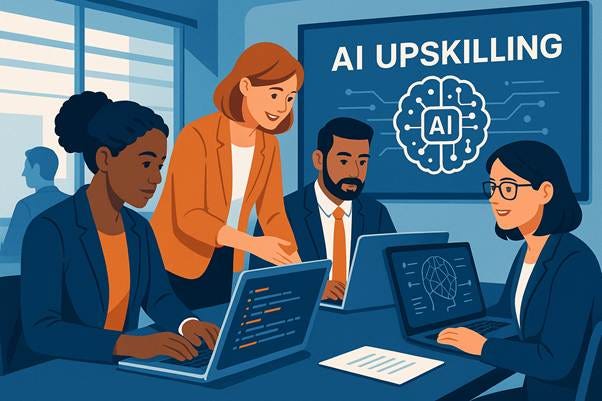
Upskilling is a strategic investment yielding 3-5x ROI in productivity, per industry benchmarks.
Start by assessing your workforce: Use tools like skills inventories or AI-powered platforms to identify gaps in areas like machine learning, data engineering, or prompt engineering.
Design tailored programs: Partner with platforms like Coursera or internal academies for certifications in Python, TensorFlow, or ethical AI. For example, Google's AI Essentials course has upskilled thousands, leading to 20% faster project delivery in participating firms.
Incorporate hands-on projects: Assign cross-functional teams to real AI pilots, such as automating routine tasks in HR or finance. Measure success with KPIs like completion rates (aim for 80%+) and post-training performance lifts.
Overcome challenges: Address resistance with change management—communicate benefits like job security in an AI era. Budget wisely: Allocate $5,000-10,000 per employee annually for upskilling, far less than the $200,000+ cost of hiring a mid-level AI engineer.
Case in point: IBM's upskilling initiative retrained 30,000 employees in AI by 2025, resulting in a 15% reduction in external hires and enhanced innovation velocity.
This strategy alone can fill 40-60% of your AI talent needs internally, per PwC data, making it a cornerstone for cost-effective scaling.
Continuing The Smart Leader's Approach
Build vs. Buy vs. Partner Strategies
The "build" model invests in long-term internal growth, ideal for core competencies. Pros: Loyalty and cultural fit; cons: Time-intensive (6-18 months).
"Buy" accelerates via direct hires or acquisitions. Use executive search firms specializing in AI; expect 20-30% premiums in competitive markets.
"Partner" leverages ecosystems: Form alliances with AI startups for co-development or universities for talent pipelines. Example: Microsoft's partnerships have sourced 25% of its AI hires.
Framework: Evaluate based on urgency, budget, and IP needs. Use a decision matrix:
Creating AI-Attractive Culture
Top AI talent seeks more than pay; they want impact. Cultivate this with:
Mission-driven projects: Tie AI work to societal good, like sustainable tech.
Flexible structures: Remote/hybrid options, async communication.
Innovation perks: Hackathons, R&D budgets.
Ethics focus: Transparent AI governance to attract principled experts.
Template: Culture Audit Checklist – Score your org on 10 factors like inclusivity (1-5 scale) and action plan gaps.
Retention Strategies That Work
Retention beats recruitment: Turnover costs 1.5-2x salary.
Effective tactics:
Personalized growth: AI-specific career ladders with milestones.
Equity and bonuses: Performance-tied stock options.
Wellness: AI burnout prevention via workload AI tools.
Feedback loops: Quarterly pulse surveys.
Proven:
Netflix's "keeper test" adapted for AI—retain only those you'd fight to keep.
Hiring Framework: How to Evaluate AI Talent
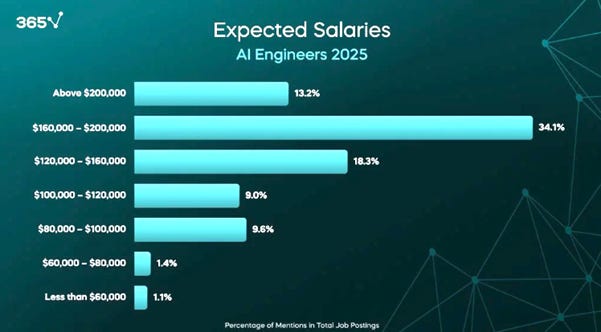
A robust framework ensures quality hires.
Steps:
Define Roles: Break into technical (e.g., NLP expertise) vs. soft (collaboration).
Source Diversely: LinkedIn, AI conferences, GitHub.
Assess Technically: Coding challenges, portfolio reviews.
Evaluate Fit: Behavioural interviews on ethics, adaptability.
Onboard Swiftly: 30-60-90 day plans.
Template: AI Hire Scorecard
Total: Weighted average >7.5 to proceed.
Structuring AI Teams for Success
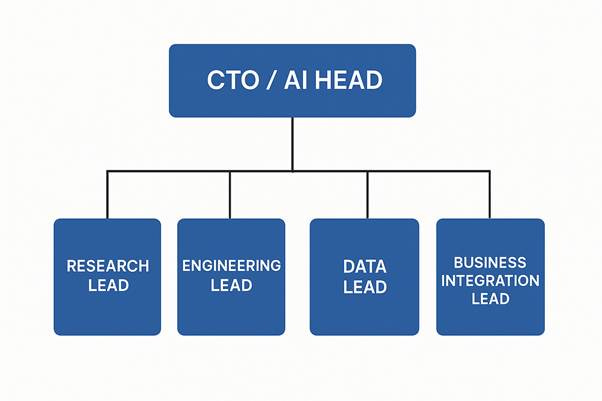
Effective AI teams blend specialists and generalists.
Models:
Centralized: AI Center of Excellence for enterprise-wide support.
Decentralized: Embedded in business units for agility.
Hybrid: Best for scale—core team plus satellites.
Org Chart Example (Hybrid Model):
CTO/AI Head
Research Lead (PhDs, innovation)
Engineering Lead (DevOps, deployment)
Data Lead (Governance, pipelines)
Business Integration Lead (Cross-functional liaisons)
Size: Start with 5-10 for startups; scale to 50+ for enterprises.
Cost-Effective Talent Strategies
Optimize spend with:
Variable Costing: Freelancers for peaks (e.g., Upwork AI pros at $100-200/hr).
Shared Services: Pool talent across departments.
ROI Tracking: Measure talent investment against AI output (e.g., revenue per AI employee).
Model: Annual Budget Breakdown
Hiring: 40% ($500k for 2-3 roles)
Upskilling: 20% ($200k)
Retention: 15% ($150k)
Partnerships: 25% ($250k)
Adjust based on growth stage—early: Heavy on build; mature: Focus on retain.
By implementing these strategies, you'll not only survive the AI talent crisis but dominate it. For customizable templates and consulting, contact me at The AI Executive.




